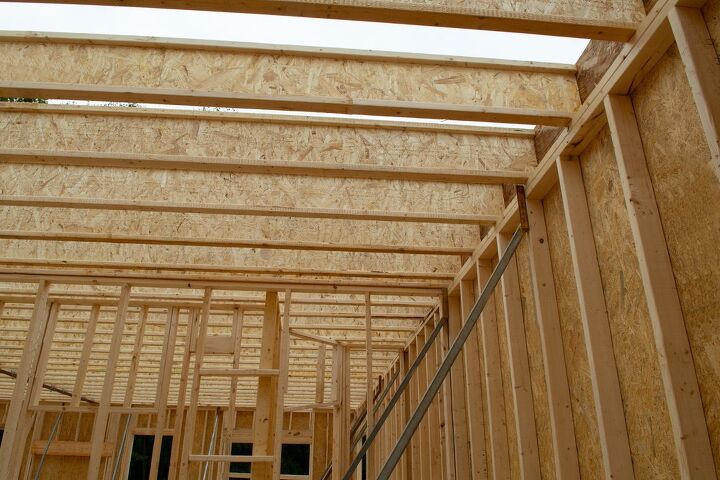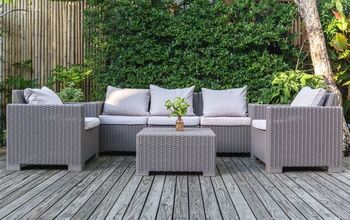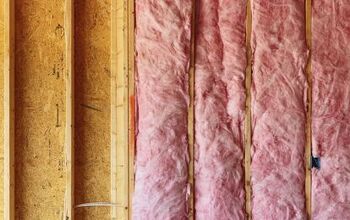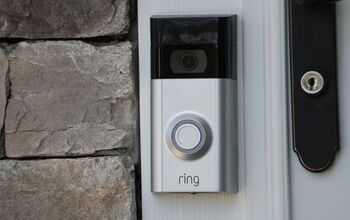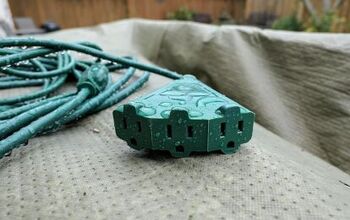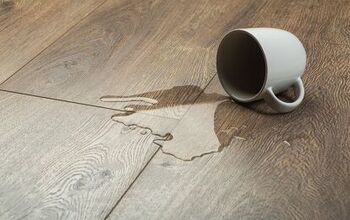Can Plywood Get Wet?

Plywood is an affordable and reliable building material, and it can be used to construct a great many things. It’s been a popular building material for decades, and most modern homes and businesses incorporate plywood in some way. Generally speaking, it’s a durable material. But like a lot of other materials, it becomes less durable when exposed to water, especially if it’s exposed for a prolonged period.
If plywood is the main material you’re using to construct an outdoor structure, you need to understand how this material holds up against water. Moreover, there are many different kinds of plywood, and some hold up well against water while others don’t. To know everything there is to know about wet plywood, read on!
Plywood doesn’t immediately get damaged when it’s wet. However, if it’s exposed to moisture for a prolonged period, such can negatively affect the plywood in a variety of ways. Overexposed plywood can rot, warp, and breed mold. Marine plywood is the most water-resistant plywood, and generally, it takes a few days for plywood to dry out completely.
Do You Need to Hire a Framing Contractor?
Get free, zero-commitment quotes from pro contractors near you.

What Is Plywood and Can It Get Wet?
Before one can understand why prolonged moisture exposure damages plywood, one needs to understand how plywood is constructed. Plywood is an engineered wood, one that’s made up of three or more thin layers, otherwise known as plies. The plies are bonded together with an incredibly strong adhesive.
The plies that make up the plywood are laid in opposite directions to create what’s known as cross-graining. This is done to ensure the wood is strong, and cross-graining also makes the plywood less prone to shrinkage or expansion. Cross-graining also makes the wood split-resistant, so one can hammer nails into plywood without worrying about splitting.
But when plywood gets wet and stays wet for an extended period of time, such can lead to swelling and distortion of the plywood’s shape. Eventually, the plies will split.
Wet plywood is also prone to rotting, and mold loves wet, rotting wood. Therefore, it’s best to keep plywood dry, especially if you intend to use plywood as a primary material when building a structure.
Can OSB Plywood Get Wet?
Oriented strand board (OSB) is a special kind of plywood. It’s often used as wall sheathing, and it can be a component in floors, roofs, and decks also.
Since it’s constructed like regular plywood, it’s prone to warping, as it’ll absorb water one minute and then release it the next. For this reason, if you’re building with OSB plywood, you should keep this material away from water.
Can Marine Plywood Get Wet?
If you’re building a home in a rainy climate, it’s quite likely marine plywood will be an indispensable material. Marine plywood holds up against water much better than regular plywood and other plywoods do. That being said, it can’t resist water forever.
When marine plywood gets wet, it doesn’t warp like regular plywood does, as the glue that’s used to make marine plywood is waterproof glue. However, the material itself is not waterproof, so if you were to submerge it underwater for a long time (multiple years), you would see that prolonged water exposure can still deteriorate the wood.
Can Birch Plywood Get Wet?
Birch plywood and Baltic birch plywood are two popular kinds of plywood, but neither material is water-resistant. Even if exterior-grade adhesive is used to bind the plies, eventually water will compromise the material, leading to rotting, warping, and even mold growth. Moreover, birch wood has a lot of pores, and through these water will travel until it reaches and wreaks havoc on the adhesive below.
Can CDX Plywood Get Wet?
CDX plywood is another popular plywood type, and much like marine plywood, this plywood does a good job at resisting moisture, yet it’s not totally waterproof. If this wood is exposed to a small amount of moisture, and only for a short period of time, there won’t be noticeable signs of degradation. But prolonged exposure to water—like if the CDX was left out in an all-day rain shower unprotected—can distort this type of plywood.
Can Untreated Plywood Get Wet?
Prolonged moisture exposure can devastate untreated plywood, and that’s because untreated plywood hasn’t been treated with any of the preservatives that make treated wood stronger. The preservatives that treated plywood utilizes make the surface and the individual plies stronger, and without these preservatives a lot of elements can cause the plywood to decay.
If untreated plywood takes on a lot of water, and it isn’t able to get rid of this quickly, then rotting will begin. And if the wood still isn’t dry days after the initial deluge, it’s at this point where mold can show up and signs of rotting will be prominent.
Can Plywood Be Waterproofed?
Plywood can waterproofed, and waterproofing plywood is a great way to avoid all the negative consequences that have been discussed so far. One can waterproof plywood DIY or purchase plywood that’s been waterproofed by a manufacturer.
Waterproofed plywood will last longer than plywood that hasn’t been waterproofed, and this is why waterproofed plywood is used to create homes, businesses, and other structures that face the elements every day. Plywood is particularly receptive to waterproofing. Even though its surface is for the most part smooth, there are still plenty of pores, and once the waterproofing substance gets through these it can strengthen the inner plies.
Can Plywood Get Wet During Construction?
Unless you’re building in a climate where rain is rare, it’s quite likely there’s going to be at least one shower while construction is in progress. A brief (less than an hour) rain shower won’t ruin plywood. But if the plywood endures a days-long storm with no protection, it’s likely it’ll be compromised once the rain stops falling.
Regardless of how long it has been exposed to moisture, you should avoid working with plywood when it’s wet. This is because wet plywood is in a vulnerable state, which means banging on it and applying lots of pressure can damage it.
For this reason, you should wait for a few days after the rain has stopped falling before you resume working with the plywood. The plywood will need 48 to 72 hours to dry out completely. If after that time passes you find that some plywood has been damaged, you need to replace the damaged would before continuing.
How Long Does It Take Wet Plywood to Dry?
A piece of plywood that’s been exposed to a lot of moisture will need a few days to dry. Exterior plywood takes longer to dry than interior plywood, and that’s because homes are generally drier than the outdoors.
If the atmosphere is particularly damp for a few days after a heavy rain storm, exterior plywood that has been exposed to such conditions will need longer than a week to dry. In some cases, plywood can take many weeks to dry. In these cases, rather than wait all that time for the plywood to dry, it’s best to just get replacement plywood.
Can a Plywood Subfloor Get Wet?
If a plywood subfloor gets wet while construction is in progress, you’ll need to give the subfloor a few days to dry. You shouldn’t work on a subfloor when it’s wet, and drying it with heat equipment can also be damaging. Even stepping on a waterlogged subfloor can distort it.
If construction is taking place in a cold environment, you’ll need to ensure snow, if it falls, is removed from the plywood subfloor immediately. Snow accumulation can lead to moisture damage and other problems.
Do You Need to Hire a Framing Contractor?
Get free, zero-commitment quotes from pro contractors near you.

Related Questions
Can plywood be used underwater?
Marine plywood is sometimes used during dock construction. Marine plywood can last 15 to 20 years if it’s maintained well, whereas deck plywood that isn’t as water-resistant can last for more than 25 years. But this latter material wouldn’t make it past a few weeks underwater.
Can plywood be used on a boat?
Marine plywood is the best plywood for boats. This is because boats take on water frequently, either from the water they’re sailing on or from the sky. If you use plywood that isn’t water-resistant to fix a boat’s structure, it’s likely the plywood won’t hold for very long.

Matt loves everything DIY. He has been learning and practicing different trades since he was a kid, and he's often the first one called when a friend or family member needs a helping hand at home. Matt loves to work with wood and stone, and landscaping is by far his most favorite pastime.
More by Matthew Mountain



